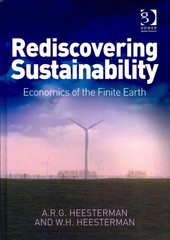Question
The mandates of the U.S. Federal Reserve are: Select an answer and submit. For keyboard navigation, use the up/down arrow keys to select an answer.
The mandates of the U.S. Federal Reserve are:
Select an answer and submit. For keyboard navigation, use the up/down arrow keys to select an answer.
a . To control the money supply and the reserve coefficient.
B. To ensure that monetary policy strictly aligns with Federal Government policy.
C. To perform Open Market Operations and Large-Scale Asset Purchases.
D. To control the level of inflation and facilitate growth with low levels of unemployment.
How does the Fed control the key interest rate?
Select an answer and submit. For keyboard navigation, use the up/down arrow keys to select an answer.
- By decree - the Chairman of the Fed announces a new rate every 6 weeks.
- By adjusting the Reserve Coefficient.
- By buying and selling treasury bonds through open market operations.
- Through forward guidance.
If the Reserve Coefficient is increased, what happens?
Select an answer and submit. For keyboard navigation, use the up/down arrow keys to select an answer.
- Banks are allowed to lend more money and the interest rate falls.
- The Fed requires banks to hold more deposits as reserves, reducing the amount they can loan out, which increases the interest rate.
- Banks cannot lend more money and the interest rate falls.
- The Fed requires banks to hold less deposits as reserves, increasing the amount they can loan out, which increases the interest rate.
Refer to the following graph:
What would you expect to happen if the interest rate begins at r1?
Select an answer and submit. For keyboard navigation, use the up/down arrow keys to select an answer.
- Agents buy bonds, increasing bond prices and decreasing the interest rate.
- Agents sell bonds, decreasing bond prices and increasing the interest rate.
- The Fed reacts and decreases the money supply.
- Consumers increase their demand for money, the demand curve shifts up until reaching equilibrium.
If there is an interest increase, how does the market adjust to equilibrium?
Select an answer and submit. For keyboard navigation, use the up/down arrow keys to select an answer.
- The Fed changes its policy, shifting the supply curve to the equilibrium point.
- The Fed changes its policy, shifting the demand curve to the equilibrium point.
- Agents purchase bonds, increasing the price of bonds and lowering the interest rate to equilibrium.
- Agents sell bonds, increasing the price of bonds and lowering the interest rate to equilibrium.
Which of the following equations represent the LM curve? The demand for money takes the form of Md=KY-hr A: Y = (1/k)*(M/P) + (h/k)*r B: r = (k/h)*...
Which of the following equations represent the LM curve? The demand for money takes the form of Md=KY-hr
A: Y = (1/k)(M/P) + (h/k)r
B: r = (k/h)Y + (M/P)(1/h)
C: r = (k/h)Y - (M/P)(1/h)
D: Y = (1/k)(M/P) - (h/k)r
Select an answer and submit. For keyboard navigation, use the up/down arrow keys to select an answer.
- A & C
- A & B
- D & B
- D & C
If the Fed increases the money supply, what is the initial change you would expect?
Select an answer and submit. For keyboard navigation, use the up/down arrow keys to select an answer.
- Demand for money increases in the market, driving the interest rate up.
- Demand for money decreases in the market, driving the interest rate down.
- The supply curve shifts right, decreasing the interest rate; quantity of money demanded increases.
- The supply curve shifts left, increasing the interest rate; quantity of money demanded decreases.
If the Fed sells treasury bonds, what happens?
Select an answer and submit. For keyboard navigation, use the up/down arrow keys to select an answer.
- Financial institutions purchase the bonds, which injecting money into the system and the interest rate falls.
- Financial institutions purchase the bonds, increasing their assets which allow them to lend more, reducing the interest rate.
- Financial institutions purchase the bonds, which removes money from the system and the interest rate rises.
- Financial institutions purchase the bonds, increasing their assets which allow them to lend more, increasing the interest rate.
Refer to the following graph: What does this graph depict? (N. B. change is from black to green)
Refer to the following graph:
What does this graph depict? (N. B. change is from black to green)
Select an answer and submit. For keyboard navigation, use the up/down arrow keys to select an answer.
- An increase in the money supply, reducing the interest rate and increasing the quantity demanded of money.
- A decrease in the money supply, increasing the interest rate and decreasing the quantity demanded of money.
- An increase in the money demand, reducing the interest rate and increasing the quantity demanded of money.
- A decrease in the money demand, increasing the interest rate and decreasing the quantity demanded of money.
Refer to the following graph:
The change that would result in moving from the black curve to the green curve could be:
Select an answer and submit. For keyboard navigation, use the up/down arrow keys to select an answer.
- The Fed increases the money supply.
- The Fed decreases the reserve coefficient.
- Agents sell bonds, which increases the interest rate.
- There is a new, greater level of income in the economy.
Step by Step Solution
There are 3 Steps involved in it
Step: 1

Get Instant Access to Expert-Tailored Solutions
See step-by-step solutions with expert insights and AI powered tools for academic success
Step: 2

Step: 3

Ace Your Homework with AI
Get the answers you need in no time with our AI-driven, step-by-step assistance
Get Started


